Opinion
Excited for Amazon’s Arrival in Long Island City? The Results for New York’s Art Community Won’t Be Pretty
Look to Seattle to get a glimpse of the tensions wrought by the tech giant.
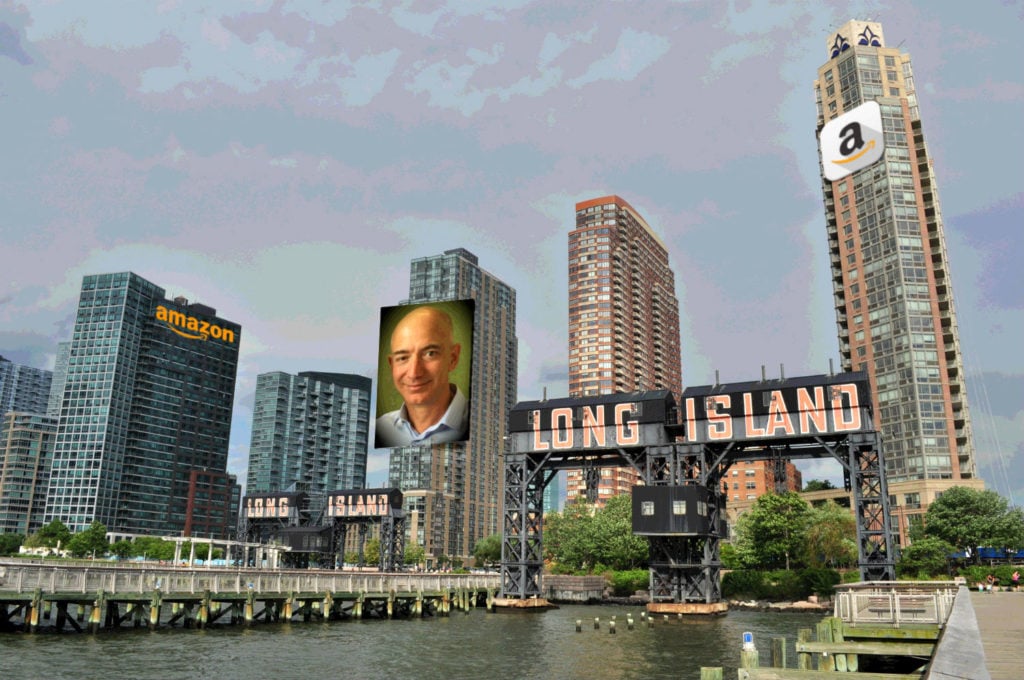
Look to Seattle to get a glimpse of the tensions wrought by the tech giant.

Ben Davis

It appears to be official: Amazon will split its second headquarters between Crystal City, Virginia, and Long Island City, New York. The news, rumored since last week, has dropped like a concussion grenade.
New York real estate developers are excited by the prospect of an influx of 25,000 highly paid tech workers, and their families. Land lords are excited. “Silicon Alley” true believers are excited. Purveyors of services for the affluent are excited (as long as they have their leases secure).
Anyone who sells high-end decor is probably excited by all these moneyed new condo owners. Though they might read a Jen Graves piece from the Stranger, which had one Seattle art and real estate maven theorizing, “the common Amazonian wants a flat-screen TV”—not art.
Alongside all this salivating, though, a chorus of dismay and alarm has already been heard.
As for myself, I think New York needs a piece of Amazon’s HQ2 about as much as it needs another restaurant that serves $2,000 gold leaf-and-caviar pizza pies. The LIC HQ2 scheme is bad news for the New York art scene.
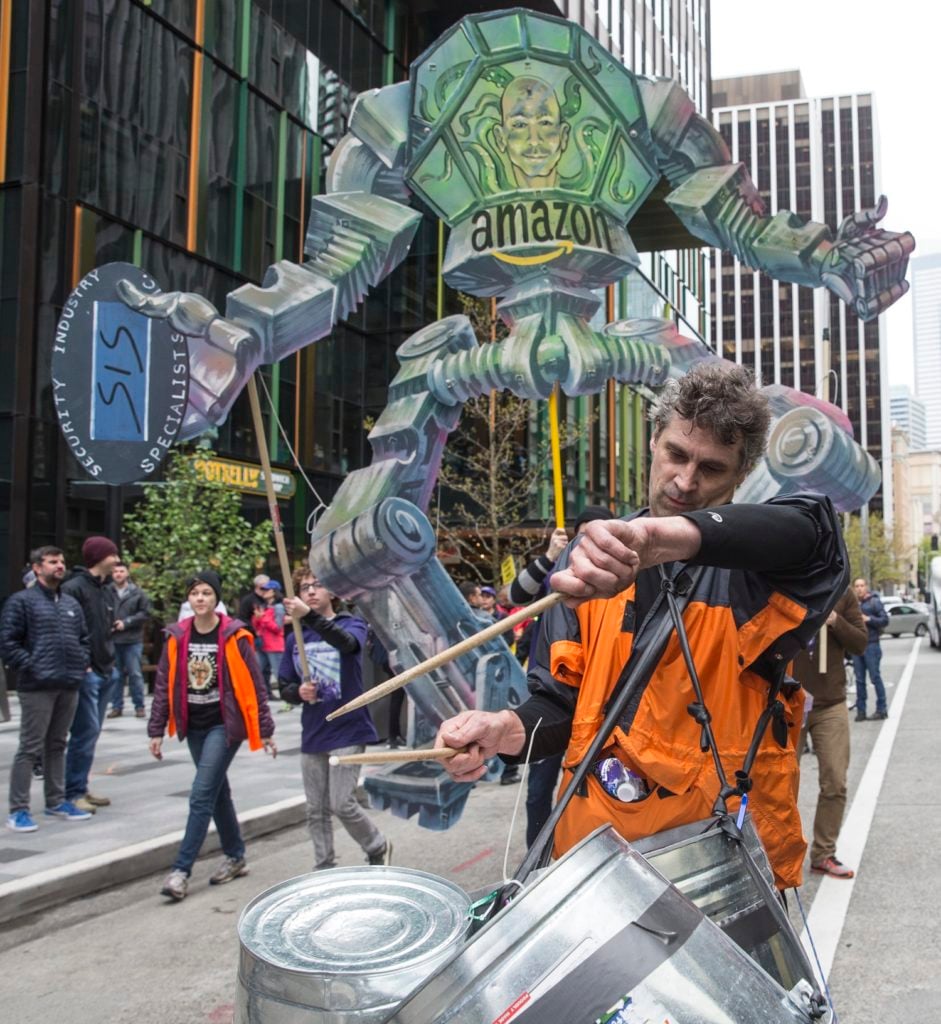
A drummer takes part in a protest in front of a Amazon.com CEO Jeff Bezos effigy outside of the Amazon.com headquarters on May 1, 2017 in Seattle. Hundreds took part in the annual May Day event. Photo by Stephen Brashear/Getty Images.
If you want a look into the future, go and read any of the many, many articles about how Seattle’s once funky and alternative cultural life has been flattened out underneath the flood of Amazon-fueled housing-cost inflation.
Or, if you prefer your critique in YouTube form, take a look at this parody video of Amazon’s “Real Life in Seattle” corporate recruiting video, which went viral a few years ago:
New York already suffers from intense inequality-driven pressures of its own. Its ravenous real estate industry is hell bent on devouring the basis for any street-level cultural vitality. The effect is well symbolized by Long Island City’s own 5 Pointz, once a street art haven, now a tony, graffiti-themed luxury apartment complex.
Mayor de Blasio’s “Long Island City: An Investment Strategy,” released in the lead-up to the HQ2 announcement—and widely viewed as his attempt to prove his use to his prospective Amazonian overlords—does contain a section on arts and culture, trying to head off such concerns. It touts the idea of 35 new live-work units as part of the city’s Affordable Real Estate for Artists (AREA) program.
Which is pretty pathetic. A few years ago, when 89 units of subsidized live/work space became available in El Barrio’s Artspace PS 109, more than 53,000 artists applied.
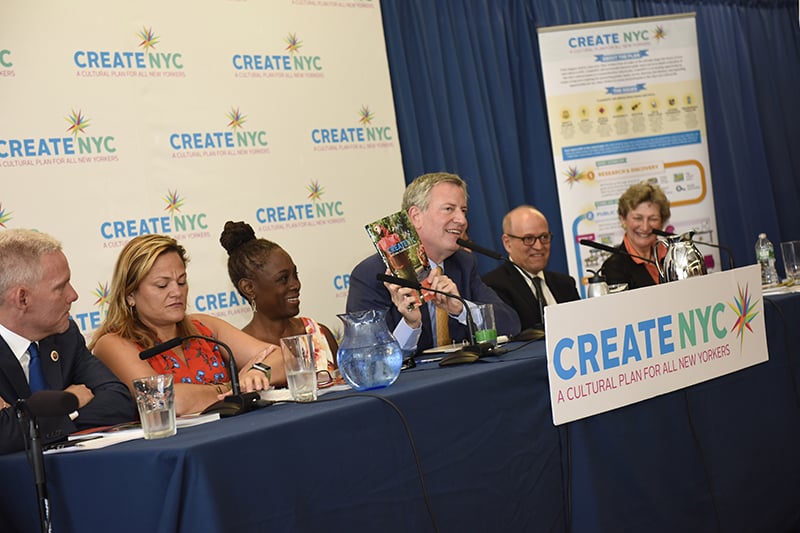
Mayor Bill de Blasio unveils the CreateNYC plan in July 2017. Photo courtesy City of New York.
Last year, the city released its “cultural plan,” CreateNYC, driven in no small part by the fact that it sees culture as an asset, but recognizes that New York’s creative communities are facing major headwinds. It contains numerous references to affordability as the major danger to the city’s cultural scene. It cites a study that says that for 76 percent of artists, either cost or space was the main challenge to working in New York City.
Honestly, that seems low to me.
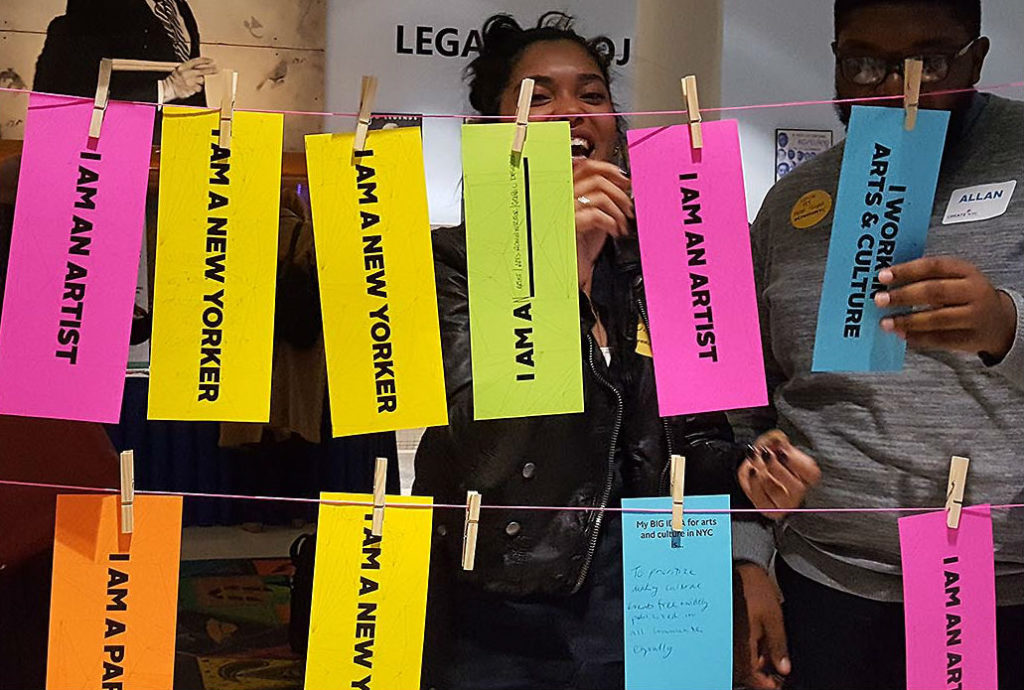
An exercise at a CreateNYC workshop during the city’s “listening” tour, in which feedback was gathered from the arts community. Image courtesy Create NYC.
In the section on “Strategies” for addressing the affordability crisis, CreateNYC offered such earth-shaking initiatives as “Compile and share a regularly updated list of affordable, City-owned spaces for artists, cultural workers, and organizations” and “Support and partner in the development of new models to develop and preserve affordable live and workspaces citywide.” Yet even these nerfed “Affordability” initiatives were all tagged as “medium-term” or “long-term.”
In the face of what it called an urgent problem, the plan failed even to suggest any urgent solutions.
Still, the very least you could do is avoid actively making the situation worse.
And it seems that New York has committed itself to something that is destined, with machine-like Amazon efficiency, to make the situation measurably more fraught, with the state offering untold hundreds of millions of dollars in giveaways to a company whose boss is the world’s richest man. (Interviewed by Kara Swisher recently, Scott Galloway noted that HQ2’s finalist cities bear a suspicious proximity to places where Bezos already owns homes.)

Jeff Bezos, chairman and founder of Amazon.com addresses the Economic Club of New York, October 27, 2016. Photo by Drew Angerer/Getty Images.
Focusing on the plight of artists specifically is always dicey. “Artists” tend to occupy a mercurial demographic layer in between new-economy professionals and those working-class communities and communities of color with deeper roots. The culture hit hardest seems likely to be Queens’s famously diverse melting pot, rooted in first- and second-generation immigrants.
Some New York artists and art spaces may thrive in Amazon’s shadow. But recent art history already provides ample illustration that the benefits of increasing inequality are not really shared equally, and tend to get eaten up by rising rent anyway—the latter being a much greater concern for the average person, artist or otherwise.
(For this reason Richard Florida, who made a name for himself saying cities should court the “creative class,” now admits the strategy does more harm than good, and instead talks about a “new urban crisis.“)
Faced with a collapsing middle market and patronage concentrated among elite institutions, art spaces are already being herded to neighborhoods like Harlem and Chinatown. This in turn sharpens tensions between communities, since long-time residents are already locked in ferocious struggles for space in hyper-gentrified New York.
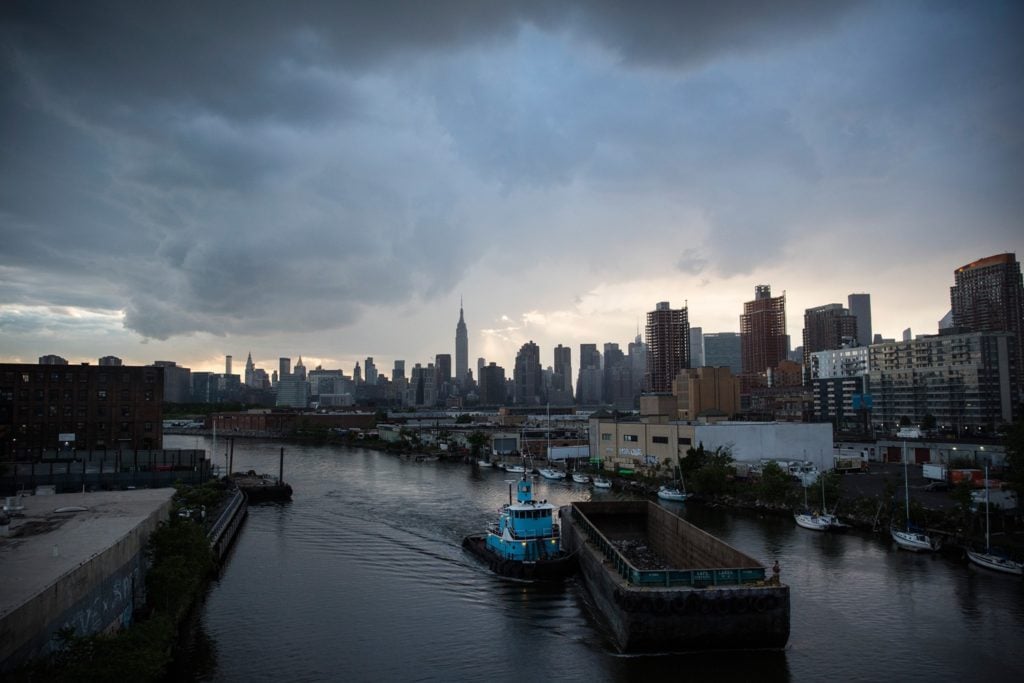
A tugboat and barge move up Newtown Creek, soon to be dubbed the “Amazon River.” Photo by Andrew Burton/Getty Images.
The city knows this—CreateNYC suggests as much. For that matter, Amazon knows this—according to the New York Times, brainstorming ways to try to prevent a repeat of the “prosperity bomb” effects that have made the company a hate object in Seattle was part of the conversation with prospective HQ2 cities. So, was that just PR? What is the plan here?
In his quest to win the HQ2 bid, New York’s exceedingly transactional governor, Andrew Cuomo, has gone so far as to offer to change the name of the nearby Newtown Creek to the “Amazon River.”
And you know what? That would actually be a fitting tribute. Loaded with industrial waste, the creek is a symbol of what happens when you let corporations run amok. As a result, it is nearly uninhabitable, its once robust ecosystem a whisper of what it once was.